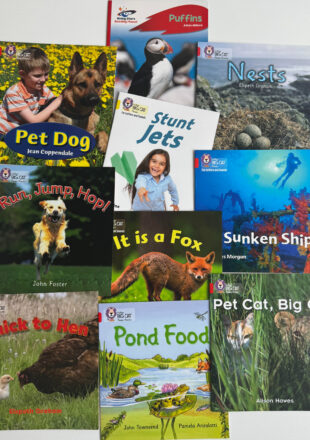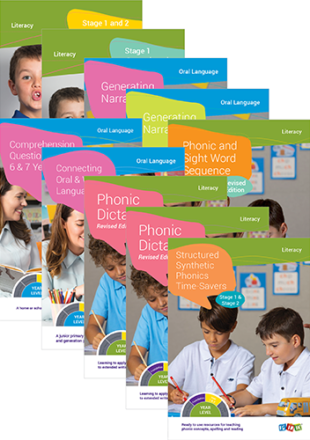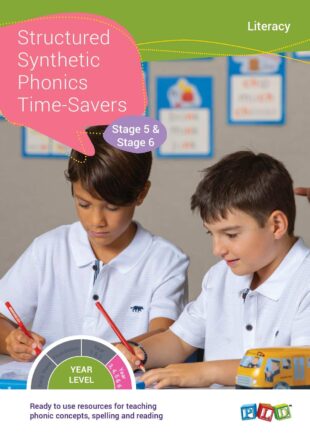Age
Showing 193–208 of 459 results
-
Foundation Parent Education Sheets and Downloads – Semester 2

This booklet outlines key information to be provided to parents, caregivers and the wider community within semester one. Children benefit when home and school work together. To support this, PLD offers an extensive range of parent milestone information sheets and videos. These resources are ideal to be disseminated to parents and the wider community through […]
This booklet outlines key information to be provided to parents, caregivers and the wider community within semester one. Children benefit when home and school work
-
Decoding and Spelling Games – Stage 1 – Individual Licence
 This is a PLD Individual Licence resource. By purchasing this licence, this program will be accessible as a digital flipbook that will be stored in your secure account on the PLD website and may only be accessed by an individual user, being the Purchaser. The program will be accessible as a digital flipbook that can be accessed by the purchaser on any device for as long as the licence is active. An Individual Licence is valid for 12 months from the date of purchase. Sharing of an Individual Licence or account credentials for the purpose of sharing an Individual Licence is a breach of Australian Copyright Law and PLD Terms of Use. For more information, visit our Individual Licence FAQ.
This is a PLD Individual Licence resource. By purchasing this licence, this program will be accessible as a digital flipbook that will be stored in your secure account on the PLD website and may only be accessed by an individual user, being the Purchaser. The program will be accessible as a digital flipbook that can be accessed by the purchaser on any device for as long as the licence is active. An Individual Licence is valid for 12 months from the date of purchase. Sharing of an Individual Licence or account credentials for the purpose of sharing an Individual Licence is a breach of Australian Copyright Law and PLD Terms of Use. For more information, visit our Individual Licence FAQ.A program to develop single word decoding and spelling skills for students operating at Stage 1. Games and tasks for targeted small groups and home
$41.25 / year[flipbook-popup id=''][/flipbook-popup] -
Sale!
Reading Real and Nonsense Words – Set 1 – 4 (eBooks)
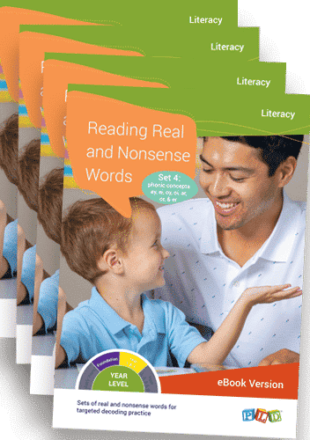
This is a PDF version of Reading Real and Nonsense Words – Sets 1 to 4
This set contains PLD’s Reading Real and Nonsense Words Set 1-4 eBooks. Buy all four resources in a bundle and save 15%. Click on each
-
Sale!
Structured Synthetic Phonics Time-Savers – Stage 1-4 Junior & Middle Primary Set

The Phonics Time-Savers Full Set contains PLD’s three Structured Synthetic Phonics Time-Savers books for Stage 1 to Stage 4. Buy both resources in a bundle and save 15%. Click on each of the links below if you wish to view the stages individually. The Phonics Time-Savers Junior & Middle Primary Set contains: Structured Synthetic Phonics […]
The Phonics Time-Savers Full Set contains PLD’s three Structured Synthetic Phonics Time-Savers books for Stage 1 to Stage 4. Buy both resources in a bundle
From $140.26 -
Sale!
Structured Synthetic Phonics Time-Savers – Stage 1 – 6 Full Set

The Phonics Time-Savers Full Set contains PLD’s three Structured Synthetic Phonics Time-Savers books for Stage 1 to Stage 6. Buy all three resources in a bundle and save 15%. Click on each of the links below if you wish to view the stages individually. The Phonics Time-Savers Full Set contains: Structured Synthetic Phonics Time-Savers – Stage […]
The Phonics Time-Savers Full Set contains PLD’s three Structured Synthetic Phonics Time-Savers books for Stage 1 to Stage 6. Buy all three resources in a bundle
From $210.39 -
Non Fiction Group Reading Books Set 4 – Year 1 Semester 2
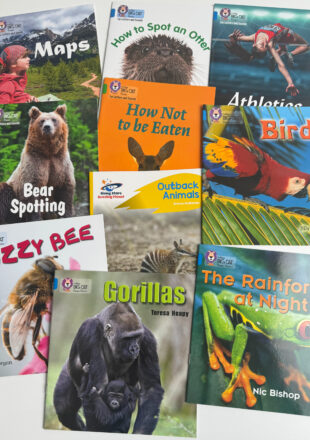
Set of 60 (10 titles, 6 of each) Stage 1 & 2 phonic concepts and further high frequency words
The modern and engaging decodable reading books in this curated set align with the PLD’s evidence-based Structured Synthetic Phonics program. These group reading books have
$590.00 -
Non Fiction Group Reading Books Set 3 – Year 1 Semester 1
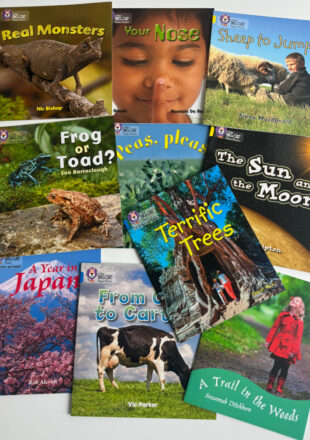
Set of 60 (10 titles, 6 of each) Stage 1 Target 2 & Target 4 phonic concepts and limited stage 2 phonic concepts, further high frequency words
The 6 titles modern and engaging decodable reading books in this curated set align with the PLD’s evidence-based Structured Synthetic Phonics program. These group reading
$570.00 -
Non Fiction Group Reading Books Set 2 (CVC, CCVC & CVCC) – Foundation Semester 2
Set of 60 (10 titles, 6 of each title) Decodable CVC, CCVC & CVCC Group Reading Books with increased length, some HFW’s and Stage 1 phonic concepts
The 10 titles modern and engaging decodable reading books in this set align with the PLD’s evidence-based Structured Synthetic Phonics program. These take-home reading books
$550.00 -
Year 1 & 2 Parent Education Sheets and Downloads
This booklet outlines key information to be provided to parents, caregivers and the wider community within semester one. Children benefit when home and school work together. To support this, PLD offers an extensive range of parent milestone information sheets and videos. These resources are ideal to be disseminated to parents and the wider community through […]
This booklet outlines key information to be provided to parents, caregivers and the wider community within semester one. Children benefit when home and school work
-
Foundation Parent Education Sheets and Downloads – Semester 1
This booklet outlines key information to be provided to parents, caregivers and the wider community within semester one. Children benefit when home and school work together. To support this, PLD offers an extensive range of parent milestone information sheets and videos. These resources are ideal to be disseminated to parents and the wider community through […]
This booklet outlines key information to be provided to parents, caregivers and the wider community within semester one. Children benefit when home and school work
-
Early Years Parent Education Sheets and Downloads – Semester 1
This booklet outlines key information to be provided to parents, caregivers and the wider community within semester one. Children benefit when home and school work together. To support this, PLD offers an extensive range of parent milestone information sheets and videos. These resources are ideal to be disseminated to parents and the wider community through […]
This booklet outlines key information to be provided to parents, caregivers and the wider community within semester one. Children benefit when home and school work
-
Sale!
Ultimate Literacy & Oral Language Year 2 Starter Pack
Key Literacy resources for Year 2 teachers including spelling, dictation, phonics, high frequency words, Oral Language and more
Literacy Targets By the end of Year 2, students should have progressed enough to accurately and fluently read and spell Stage 2 words and a
From $631.16 -
Sale!
Ultimate Literacy & Oral Language Year 1 Starter Pack
Key Literacy resources for Year 1 teachers including spelling, dictation, phonics, high frequency words, Oral Language and more
Literacy Targets By the end of Year 1, students should have progressed from decodable reading books and be able to accurately and fluently read and spell Stage
From $624.78 -
Structured Synthetic Phonics Time-Savers – Stage 5 & 6
Ready to use resources for teaching phonic concepts, spelling and reading.
The Structured Synthetic Phonics Time-Savers for Stage 5 & Stage 6 program is designed to save time, simplify planning and to support educators in delivering impactful phonics lessons with ease. Aligned with the Phonic and Sight Word Sequence, the program includes resources that simplify lesson planning while delivering high-quality phonics instruction. The program is designed to support spelling and reading development through explicit instruction, practise and revision, ensuring that students achieve success in early literacy. Program Includes: A4 book: Spiral-bound, full colour and no preparation required. Stage 5 & Stage 6 Colour-Coded Word Lists: Fully prepared, colour-coded spelling lists that highlight phonic patterns and sound structures for easy teaching and learning. Student-Friendly Spelling Lists: Smaller, colour-coded versions of the word lists are provided for students, enabling independent learning and consolidation of concepts. Flashcards for Phonics Concepts: Bright, engaging flashcards to introduce and reinforce phonics concepts effectively. Rapid Automatic Reading Tasks: Focused activities designed to improve reading accuracy, speed and fluency. Weekly Spelling Routines: Clear templates and activity guides to help structure spelling lessons and provide consistent practice. Other Programs within the Range: Structured Synthetic Phonics Time-Savers – Stage 1 & 2 Structured Synthetic Phonics Time-Savers – Stage 3 & 4 Structured Synthetic Phonics Time-Savers – Stage 5 & 6 Structured Synthetic Phonics Time-Savers Stage 1-4 Junior & Middle Primary Set Full Set of Structured Synthetic Phonics Time Savers Links to the Teaching Sequence Manuals: This product can be used to support the implementation of the Year 3, 4, 5 & 6 Teaching Sequence Manual on pages 21 – 32.
$82.50$82.50 incl. GST[flipbook-popup id=''][/flipbook-popup] -
PLD’s Alignment to the Australian National Curriculum
How does PLD align to the Australian National Curriculum?
In the attached download we have outlined where PLD applies to each year level, the content code and descriptor and the related PLD programs.




